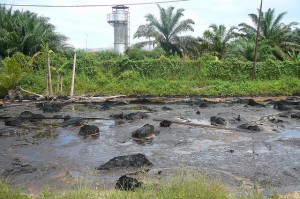
It may seem like a silly question: Can fruit cause more pollution than coal? But from the perspective of Indonesian waterways, the answer is most certainly yes.
According to Mukri Friatna, head of advocacy for WALHI (Friends of the Earth Indonesia), “Oil palm plantations ranked first as producers of pollutants, followed by mining companies.” WALHI released a report detailing its findings this past December.
This isn’t the first time that palm plantations and mining corporations have been in competition for the top spot on the list of environmental wrongdoers. As we witnessed while traveling through Borneo, palm and mining joint ventures join hands to plow down rainforests.
Any jungle that has the misfortune of growing atop coal, gold, and boxite reserves is liable to be “removed” to make room for massive mining operations. Once the valuable materials have been extracted, the dusty and nutrient-depleted soil is filled in and palm monocultures begin to expand across great expanses that were once tropical rainforests.
None of which excuses the coal mining industry for anything. WALHI’s findings reveal that while oil palm plantations are responsible for having polluted 31 of Indonesia’s rivers, coal companies dumped toxic waste and other dangerous waste products in 19 more. So even though palm plantations are the undisputed champion of poisoning Indonesia’s watercourses, coal mining is still a serious contender.